Eco-brutalism isn’t just an architectural buzzword—it’s a growing design philosophy that fuses the raw honesty of brutalist materials with the gentle touch of nature. In 2025 and beyond, we’re seeing a seismic shift: homeowners are no longer choosing between minimalism and environmentalism. They want both. They want bold structures that don’t shy away from weight—and they want those structures to breathe, live, and heal alongside the planet.
Let’s explore 23 eco-brutalist home trends that are redefining what modern, sustainable living can look like.
1. Exposed Concrete Meets Climbing Ivy

Start simple: raw, unfinished concrete walls softened by dense greenery. Ivy, jasmine, or Boston creeper creates a poetic contrast between static and living.
2. Green Roof Terraces
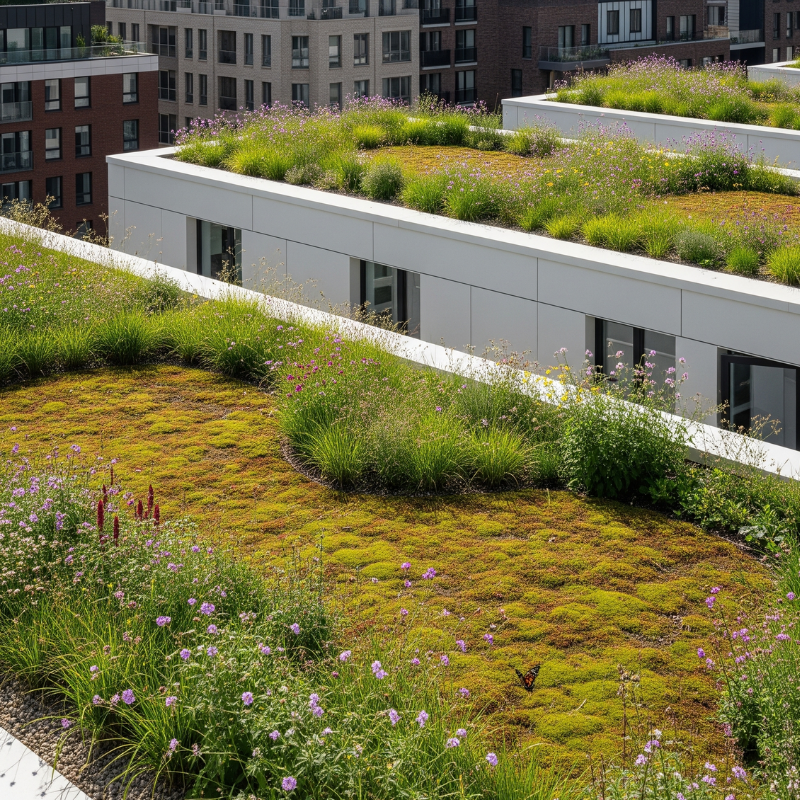
Rather than hiding rooftops, eco-brutalist homes celebrate them with grass blankets, moss beds, and even pollinator-friendly gardens—helping insulation and biodiversity.
3. Rammed Earth Meets Reinforced Concrete
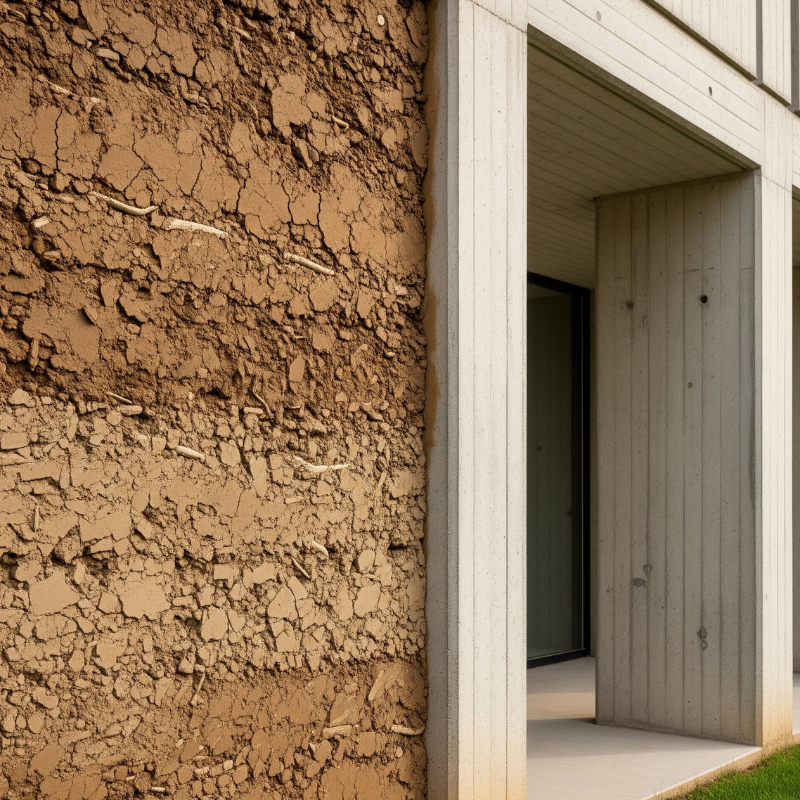
Hybrid walls using compressed natural soil alongside brutalist support structures create a rugged-yet-natural blend of strength and sustainability.
4. Concrete Planter Facades
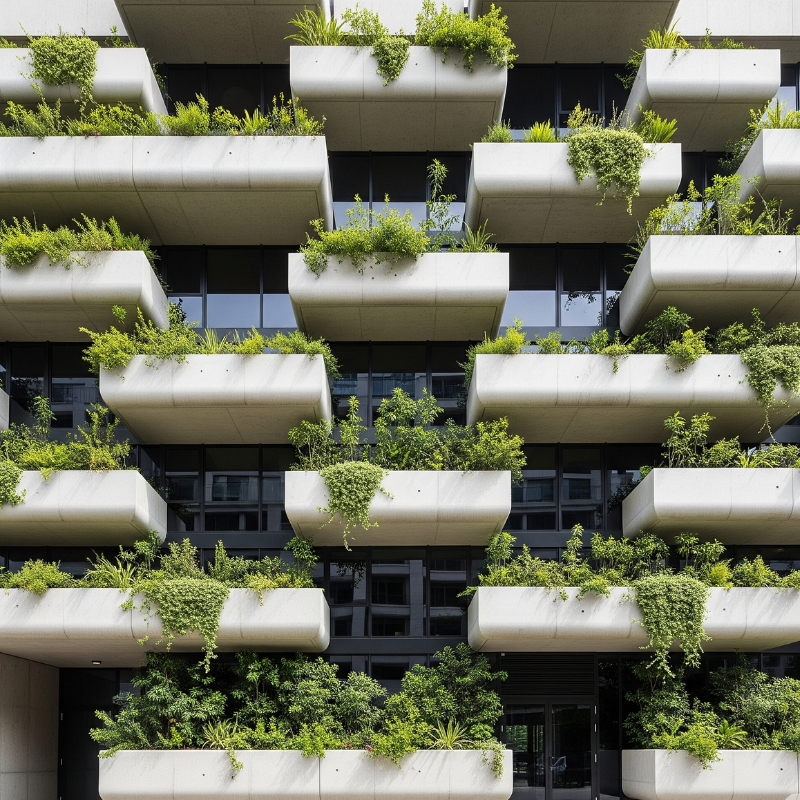
Instead of merely framing windows, cast-in-place concrete is shaped into built-in planter troughs—creating lush vertical gardens across the façade.
5. Textured Formwork with Organic Imprints
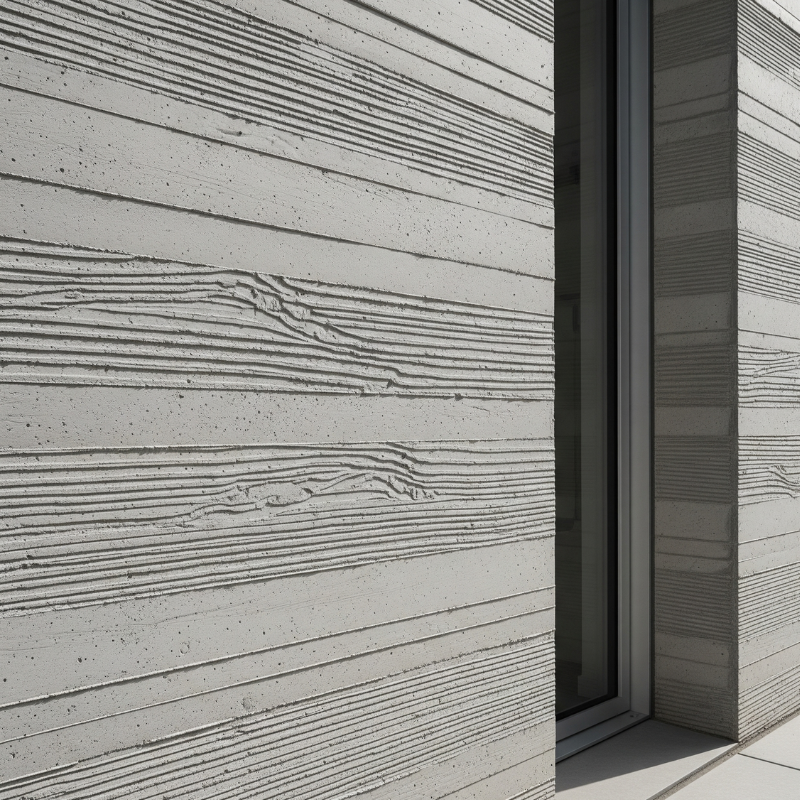
Brutalist surfaces no longer mean lifeless gray. Wooden or bamboo formwork leaves behind grainy, organic textures, offering a tactile, natural finish.
6. Geothermal Under Slab Heating
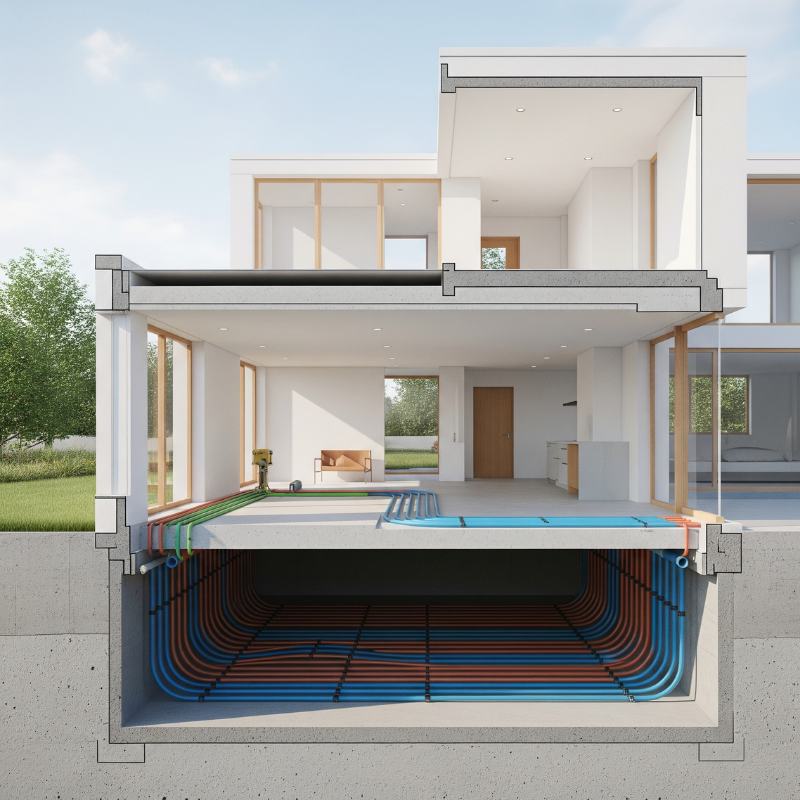
Underneath all that raw concrete? Energy-efficient geothermal tubing that uses the Earth’s temperature to heat or cool the home naturally.
7. Oversized Thermal Mass Walls

Eco‑Brutalism uses thick concrete for thermal massing—absorbing heat by day and releasing it at night—reducing energy needs passively.
8. Rainwater-Catching Sculptures
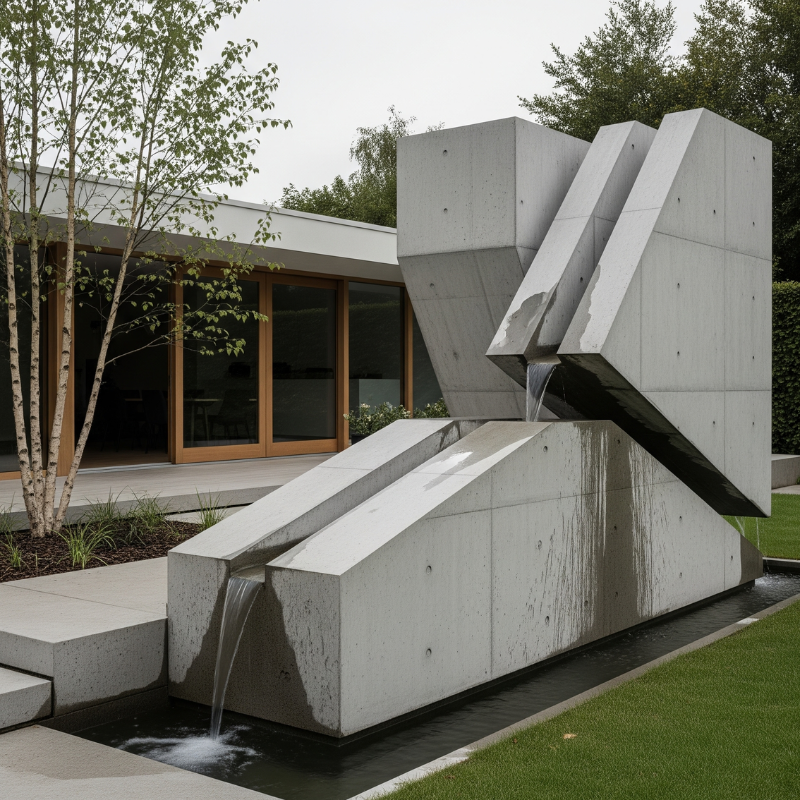
Massive, brutalist concrete features double as rainwater collectors, guiding water into underground tanks or greywater systems via artistic channels.
9. Open-Air Atriums Framed in Concrete
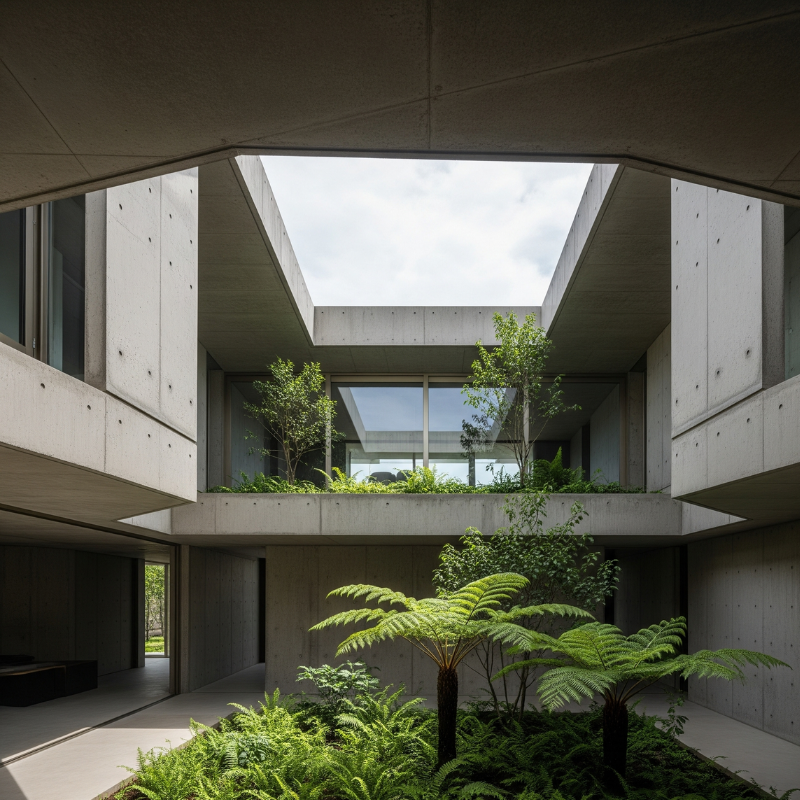
Large, central voids within the home—carved out in sharp geometry—allow for light, air, and vegetation to flourish in the middle of the structure.
10. Brutalist Pergolas with Vines
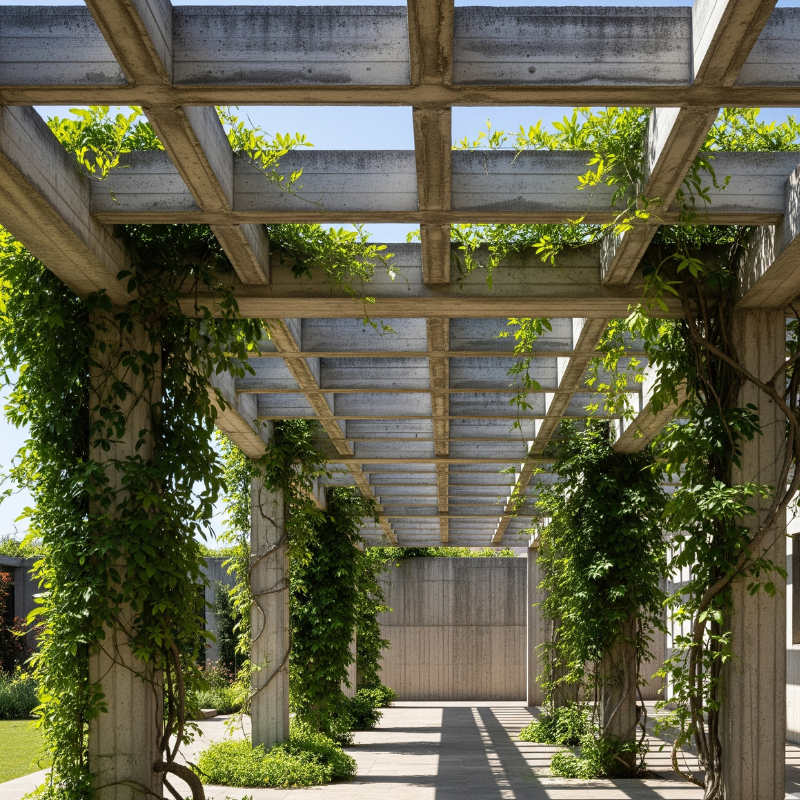
Thick, raw columns and slabs form overhead structures that vines and creepers twist around, bringing softness to hardness.
11. Passive Cooling via Courtyards

Eco‑Brutalist homes revive the courtyard—using concrete massing to cool inward-facing gardens without mechanical systems.
12. Moss-Lined Steps and Paths
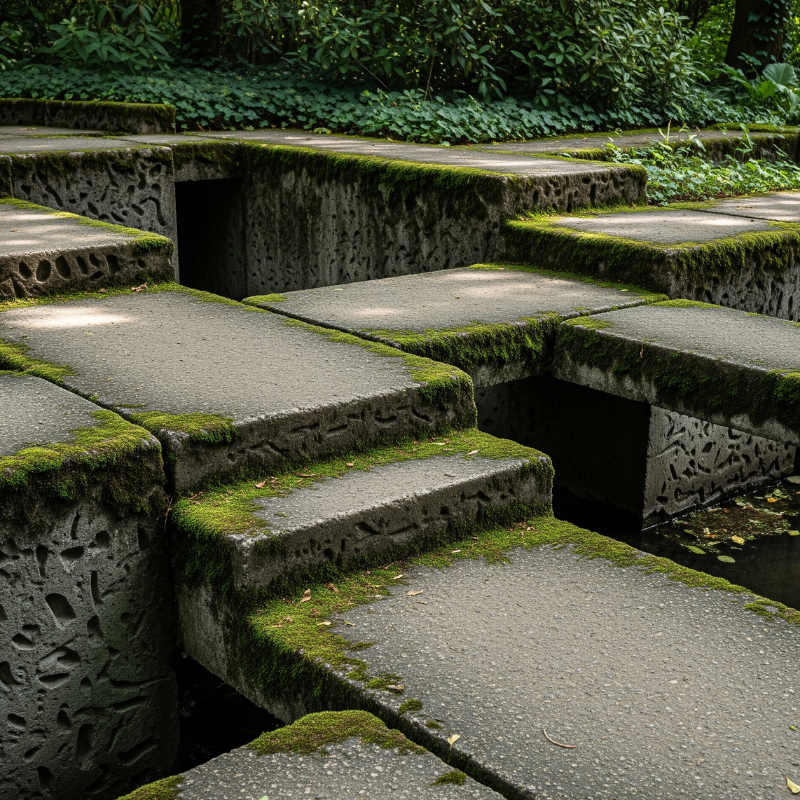
Steps carved directly into cast concrete slabs are softened with moss that naturally finds home in corners, cracks, and edges.
13. Embedded Solar Panels
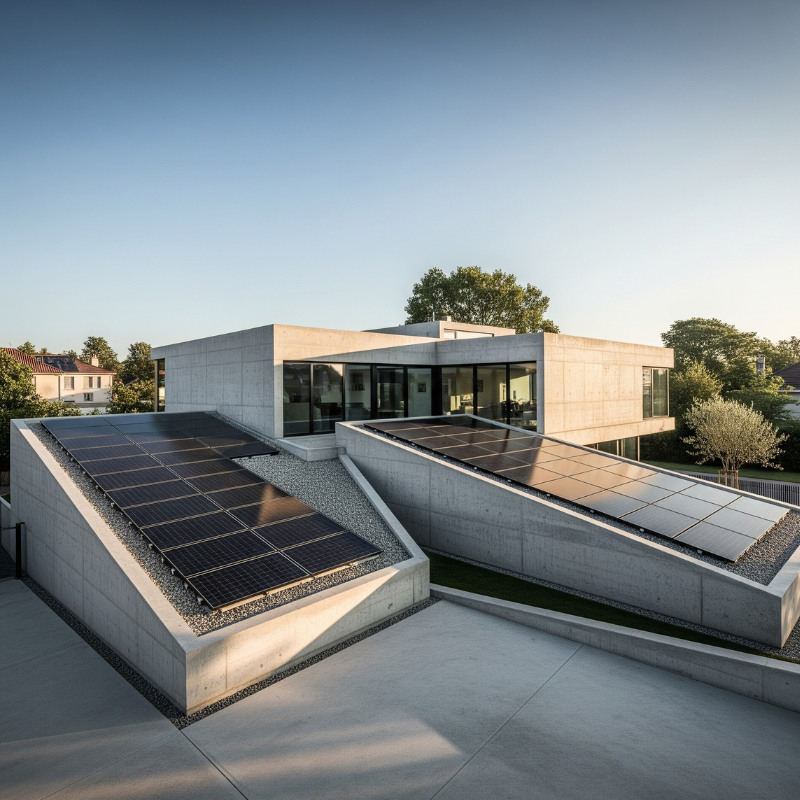
Flat, slanted roof planes become invisible carriers for photovoltaic panels—giving brutalism a sun-powered update.
14. Minimal Windows with Maximum Orientation

Rather than punching tons of holes in concrete walls, Eco‑Brutalist designs carefully orient fewer windows for optimal daylighting and insulation.
15. Reclaimed Concrete Blocks
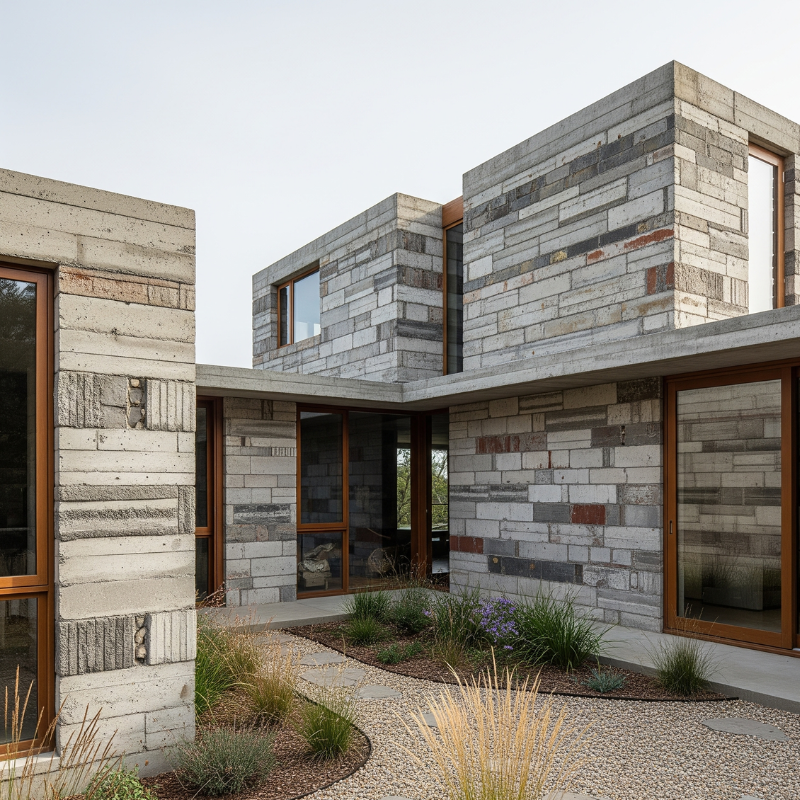
Why pour new when you can repurpose old? Reclaimed concrete from torn-down buildings is finding its way into new, green-forward brutalist homes.
16. Integrated Living Walls

Double-height interiors boast green walls—either soil-based or hydroponic—built directly into the vertical concrete mass.
17. Pebble-Dashed Earth Floors
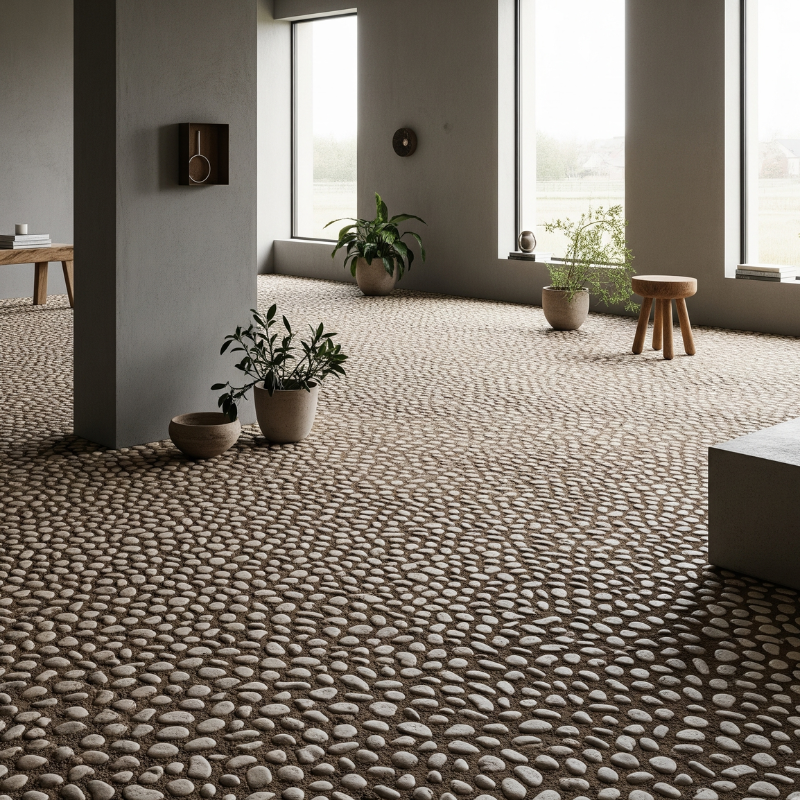
Instead of polished terrazzo, many are opting for a rawer, pebble-set concrete flooring that allows natural drainage and a closer-to-earth feel.
18. Brutalist Birdhouses
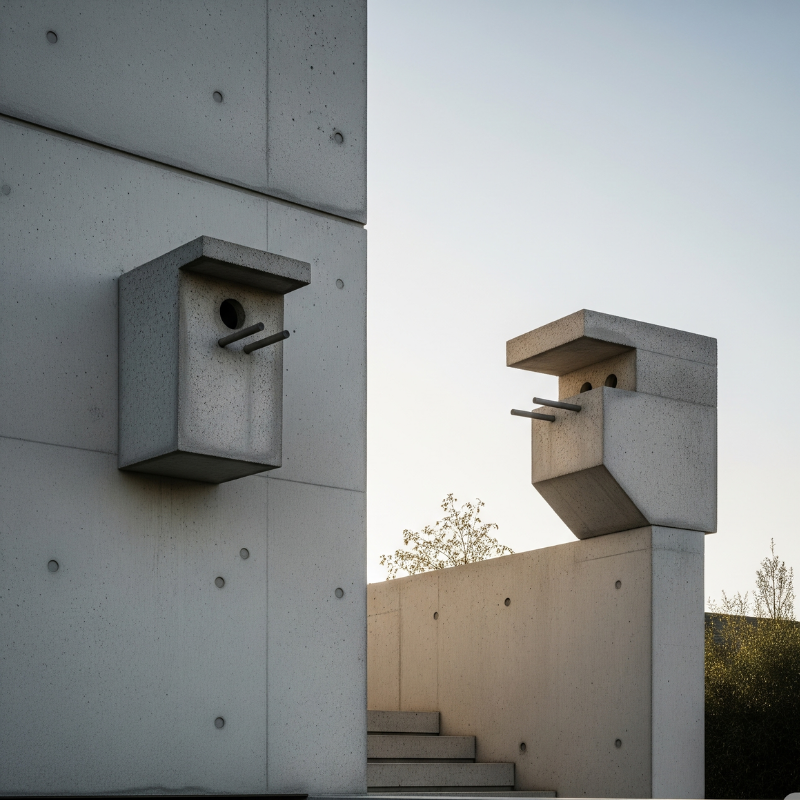
Yes, even the birds get their own concrete mini-monuments—either embedded in façades or perched like sculptures atop parapets.
19. Low-VOC Concrete Finishes
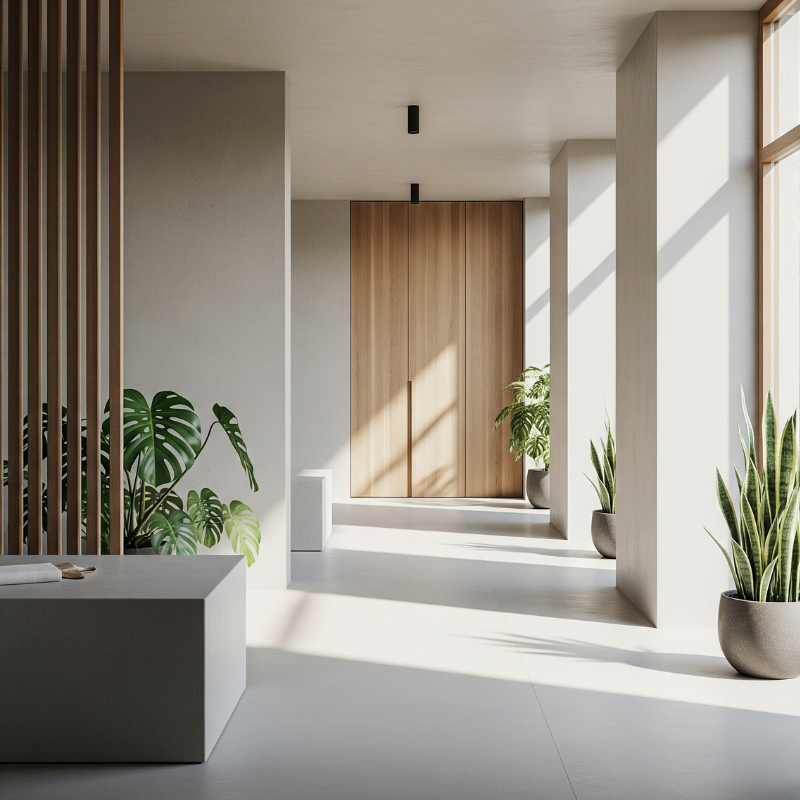
Modern concrete mixes and sealers are now available with low volatile organic compounds (VOCs), making interiors healthier and toxin-free.
20. Indoor Trees Growing Through Cutouts

Strategic cuts in the ceiling or stairwells allow real trees to grow through the home—rooted in earth, framed in concrete.
21. Recycled Steel + Concrete Hybrids
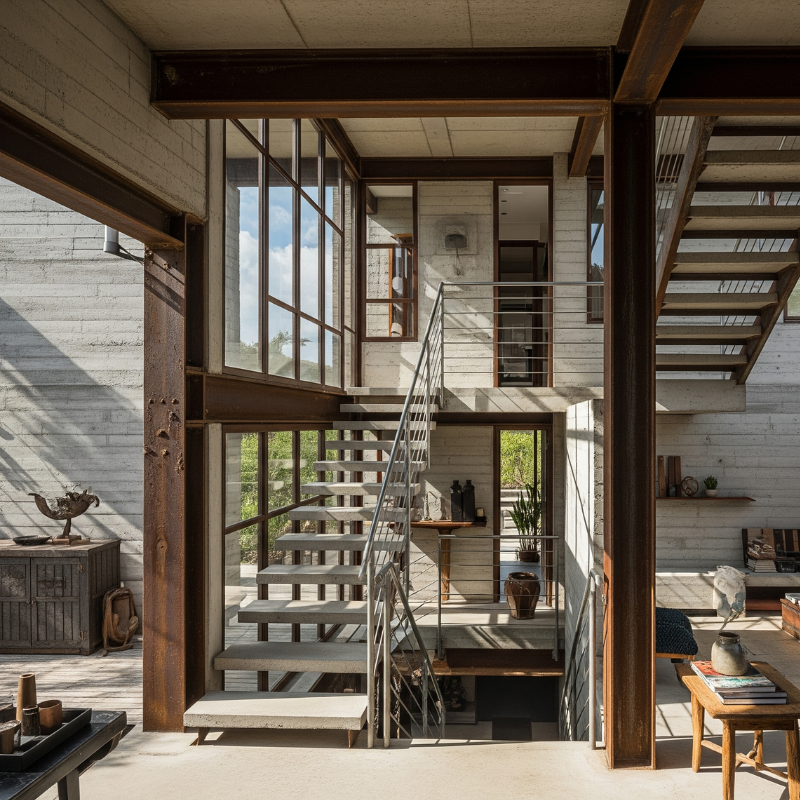
Beams, balustrades, and window frames use recycled steel, complementing the permanence of concrete with the ethos of reuse.
22. Corten Steel Inserts in Concrete
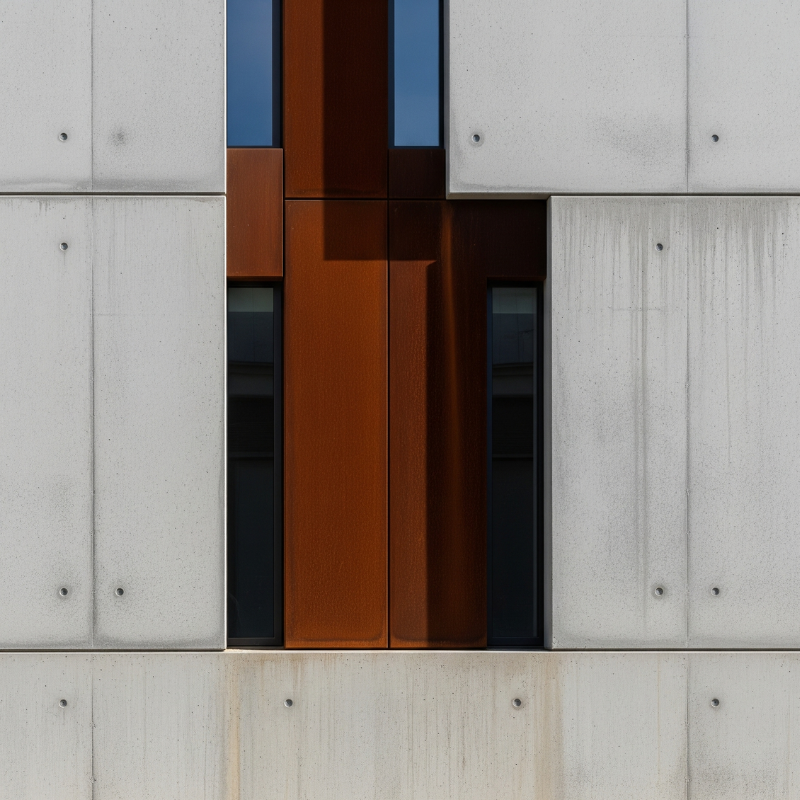
Rusting steel—allowed to age beautifully—slots into raw concrete walls for contrast, shadow play, and a nod to the industrial origins of brutalism.
23. Raw Beauty, No Apologies
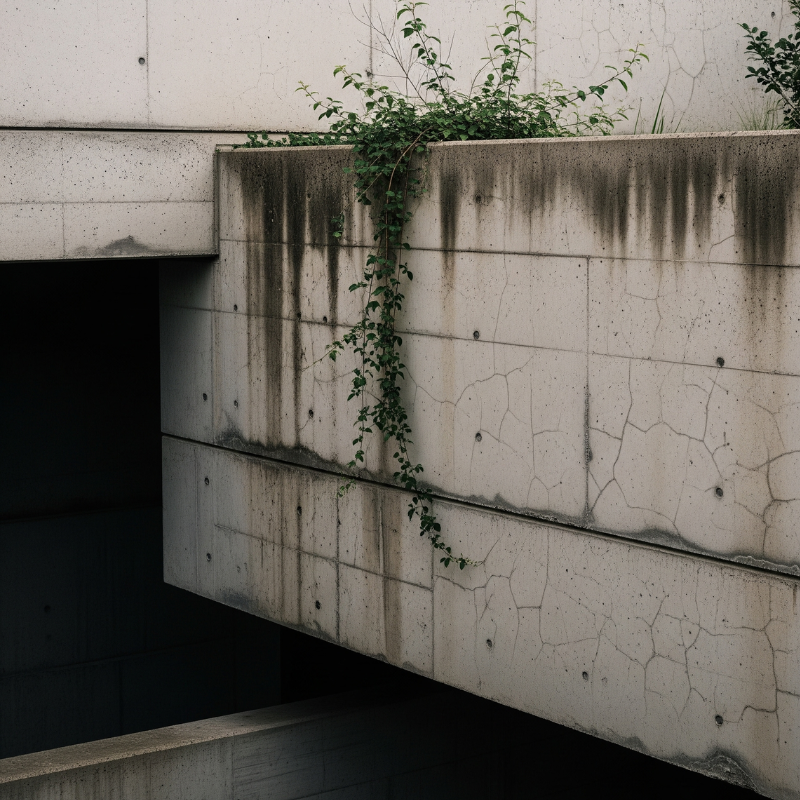
Above all, Eco‑Brutalism embraces imperfections—whether that’s a water stain, uneven color tone, or a climbing plant cracking its way through. This isn’t about pristine finishes. It’s about a living relationship between structure and environment.
Why Eco‑Brutalism Matters Now
This movement is more than a design style—it’s a mindset. It’s about accepting that our homes have a material footprint and choosing to be deliberate with it. Concrete, when used sparingly, thermally, and in harmony with nature, becomes less of an enemy and more of an ally. Combine that with renewable tech, living greens, and passive climate control—and you’ve got a home that not only lasts but also gives back.
Final Thoughts
Eco‑Brutalist homes prove that bold doesn’t mean cold. By blending nature with strength, we redefine modern sustainability. Whether you’re designing your dream home, remodeling, or simply gathering inspiration—remember that the future is green, raw, and honest.
Want to explore more sustainable architectural trends?
Subscribe to our newsletter for weekly doses of sky-high ideas and grounded design wisdom.





